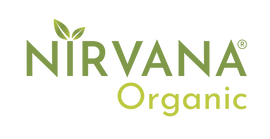You might be surprised to learn about the worldwide production of more than 300 different variations of honey. The Himalaya honey market features seven main categories of honey according to their form: liquid honey comb honey and cut comb honey in liquid along with natural honey crystallized honey and whipped honey. But, the key question remains unclear when you consume honey: Does it bring genuine health benefits to your body?
The growing demand for honey brings commercialization and contamination. Several mass-produced brands dilute the honey composition by adding water, sugar, or high fructose corn syrup to increase volume and profit margins. Others also remove pollen to enhance shelf life and clarity, losing honey its natural enzymes and health benefits.
The Purity of Wild Forest Honey
The most natural raw honey is forest honey that is harvested by wild, wandering bees that don't belong to controlled bee populations. In this type of commercially available honey, there is no human interference inside the hive and hence it isn't possible to ascertain the honey's age as well as where it comes from. This ensures a stronger, richer flavor as the nectar is gathered through a mix of wildflowers as well as vegetables.
If you like pure, nutrient-contented honey, natural, unprocessed, raw honey is your best bet. Himalayan forest honey, say, keeps its healthy properties intact, so in all respects, it's a far better option if taste and wellness are what you favor in every mouthful.
What is Commercial Honey?
Commercial honey companies process their products through high-temperature procedures followed by fast cooling practices to enhance its texture together with its storage potential. The pasteurization process ensures easier packaging and management during commercial sale. Melted honey becomes easier to process through filtration which results in both purer substance along with improved smoothness and translucence.
Honey pasteurization extends its shelf life and kills yeast cells yet simultaneously cuts down on its nutrients and antioxidants. Raw honey contains all its natural health benefits which commercial honey does not possess despite its attractive appearance.
Comparison Between Forest Honey and Commercial Honey
The most authentic type of honey comes from forests since it maintains its natural elements and medicinal benefits without any alteration. Wild bees gather nectar from diverse plant sources and process it within their hives with wing movements to dehydrate the liquid until it transforms into honey for two to three weeks. Beekeepers obtain forest honey by filtering it through small mesh to eliminate impurities yet preserve vital nutrients. Even with so many advantages, the Himalayan honey price is reasonable.
Commercial honey goes through substantial processing operations. The processing temperature exceeds hive temperature of 40°C by reaching levels around 70°C. The elevated heat reduces honey's enzymes and antioxidants alongside bioactive components which results in loss of multiple health-oriented advantages.
Ultra Filtering methods in commercial honey production remove valuable bee pollen content that contains essential fatty acids and micronutrients together with anti-inflammatory properties. Numerous commercial brands add artificial sweeteners to their products together with sugar syrups which turns their honey into a processed sugar-based alternative instead of authentic honey.
Forest Honey vs. Commercial Honey – Key Differences
Nutritional Value
-
Forest honey contains amino acids as well as minerals, vitamins and enzymes in addition to polyphenols that work as robust antioxidants.
-
The extensive processing of commercial honey leaves it with minimal antioxidant and nutrient content.
Bee Pollen Content
-
Forest honey maintains its bee pollen content which delivers anti-inflammatory benefits and protects liver health.
-
The ultrafiltration and heat treatment processes performed on commercial honey completely strip away all pollen content.
Artificial Additives
-
Forest honey remains untouched by additives because it maintains both its pure natural composition as well as free chemical contamination.
-
Additions of sugar syrups along with preservatives in commercial honey diminish its health advantages.
Which Honey Should You Choose?
Buy Himalayan raw honey if you want completely natural honey with its full nutritional value. Always review the ingredients on supermarket honey labels before selecting raw unprocessed options to receive nature's intended health benefits.




